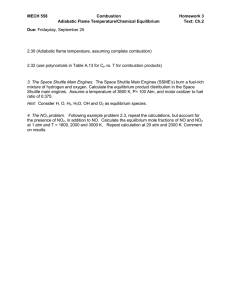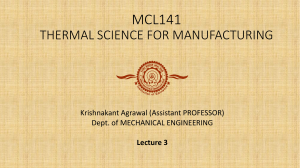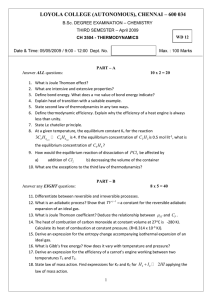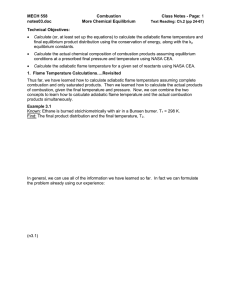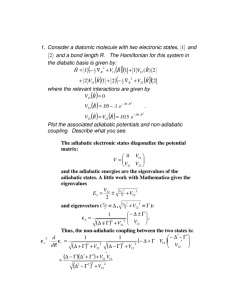Four Postulates can be used to define classical thermodynamics:
advertisement
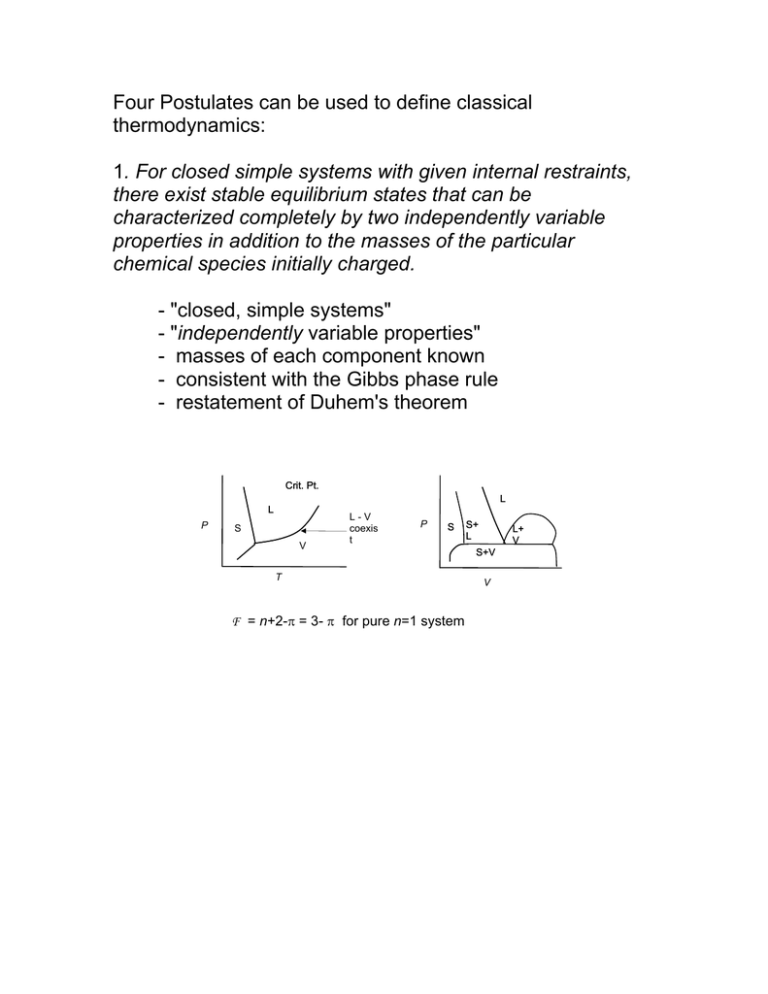
Four Postulates can be used to define classical thermodynamics: 1. For closed simple systems with given internal restraints, there exist stable equilibrium states that can be characterized completely by two independently variable properties in addition to the masses of the particular chemical species initially charged. - "closed, simple systems" - "independently variable properties" - masses of each component known - consistent with the Gibbs phase rule - restatement of Duhem's theorem Crit. Pt. L L P S V L-V coexis t P S T F = n+2-π = 3- π for pure n=1 system S+ L L+ V S+V V 2. In processes for which there is no net effect on the environment, all systems (simple and composite) with given internal restraints will change in such a way that they approach one and only one stable equilibrium state for each simple subsystem. In the limiting condition, the entire system is said to be at equilibrium. - applies to all isolated systems - describes the natural tendency of processes to approach equilibrium at a minimal energy and maximal entropy state - linking postulates I and II provides a means for mathematically describing thecriteria of phase and chemical equilibria 3. For any states (1) and (2), in which a closed system is at equilibrium, the change of state represented by (1) to (2) and/or the reverse change (2) to (1) can occur by at least one adiabatic process and the adiabatic work interaction between this system and its surroundings is determined uniquely by specifying the end states (1) and (2). - adiabatic work interactions of any type in closed systems are state functions. - adiabatic form of the 1st law : dE = δWadiabatic = δQ + δW where δW and δQ are the actual heat and work interactions that occur for non-adiabatic processes between the same end states (1) and(2). 4. If the sets of systems A,B, and A,C each have no heat interaction when connected across nonadiabatic walls, there will be no heat interaction if systems B and C are also connected. -"Zeroth law of thermodynamics" - concept of thermal equilibrium and the absence of a heat interaction - temperature differences are needed for heat transfer to occur Specific type of work interaction δW = Fs • dx pressure-volume — – PdV (expansion or compression of system volume) surface deformation — σ da ( σ= surface tension, a = surface area) electric charge transfer — ∃dq ( ∃ (or ε) = electromotive force or potential, q = charge) electrical polarization — E dD ( E = electric field strength, D = electric displacement) magnetic polarization — MdB ( M = magnetization, B = magnetic induction) frictional — Ff dx stress-strain — Vo( Fx /a)dΩ (Fx /a = stress, dΩ = linear strain = dx/xo and VodΩ/a=dx) general shaft work — δWs






